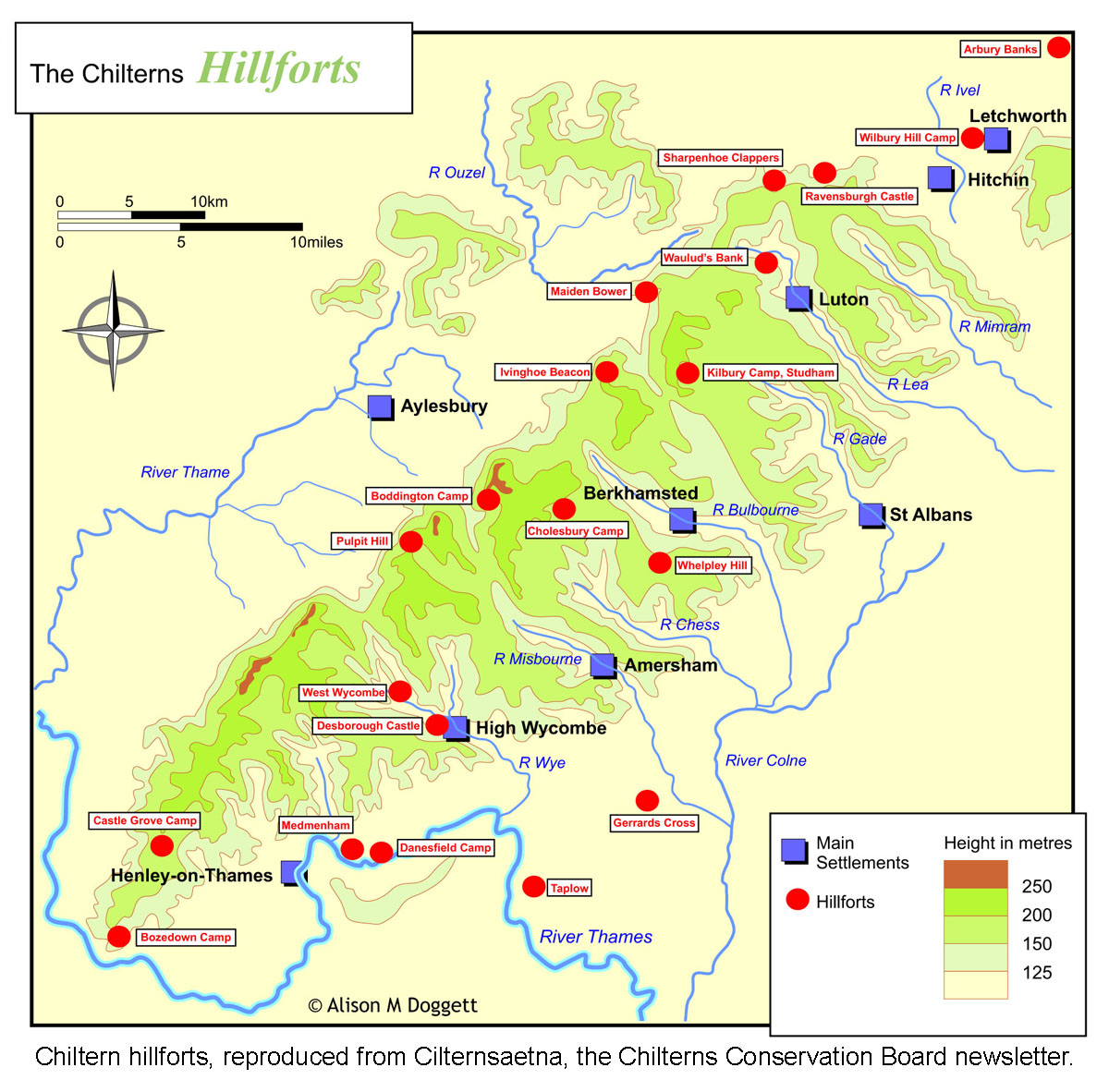
|
|
|
|
|
|
|
|
|
|
|
|
|
|
|
|
|
|
|
|
|
|
|
|
|
|
|
|
Buckinghamshire ‘hillforts’

They always get called ‘hillforts’, because the most obvious examples tend to be on prominent hilltops surrounded by earthbanks. Current thinking, though, is that some were just settlements surrounded by a fence to keep the animals in and predators out.
Buckinghamshire has clear examples of both. Ivinghoe Beacon was most likely a defensive hillfort, high on the Chiltern escarpment. It would have been there when the Romans invaded Britain. But what about Aylesbury? That too had a surrounding bank that was there before the Romans, but Aylesbury was more likely just a settlement – as it still is today.
THE TWIN PROJECTS
The Active Archaeology Group‘s project started in response to two other initiatives: the Hillforts Atlas proposed by Oxford University and the Chilterns Hillforts Project sponsored by the Chilterns Conservation Board.
Both were asking for enthusiasts teams to review the state of their local hillforts – an ideal opportunity for the newly formed AAG. The Chilterns has a large number of ‘hillfort’ sites. The county north of the Chiltern escarpment has more, though not necessarily on prominent hilltops.
Both are aiming to tackle the thorny question: which were actually defensive military forts and which weren't? And how were the defensive and non-defensive sites related?
Buckinghamshire is an ideal place to study these questions because it has a wealth of pre-Roman embanked sites, often within a short distance of each other.
Members of the AAG have so far visited four sites and one report is completed.
- Sharpenhoe: click here to read our summary and report on this site at the far north-eastern end of the Chiltern escarpment.
- Boddington, near Wendover
- Pulpit Hill, above Little Kimble
- Cholesbury
Pages will be added on each of these in the near future.